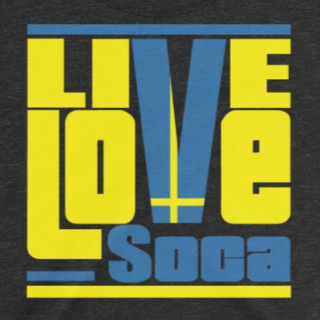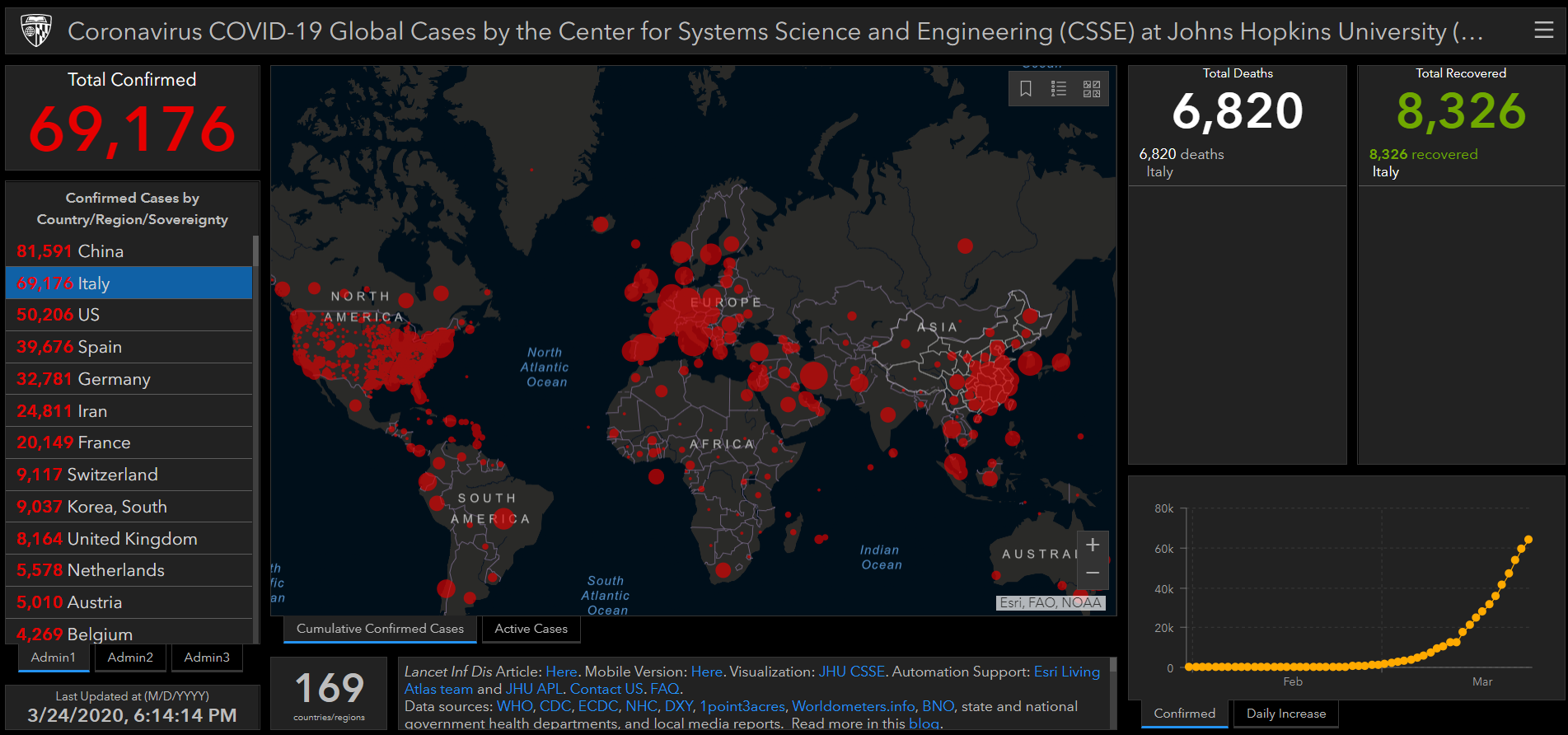Welcome to DU!
The truly grassroots left-of-center political community where regular people, not algorithms, drive the discussions and set the standards.
Join the community:
Create a free account
Support DU (and get rid of ads!):
Become a Star Member
Latest Breaking News
General Discussion
The DU Lounge
All Forums
Issue Forums
Culture Forums
Alliance Forums
Region Forums
Support Forums
Help & Search
Celerity
Celerity's Journal
Celerity's Journal
March 25, 2020

The coronavirus has not only attacked vulnerable individuals—it has highlighted how Europe’s atrophying social ties leave a growing precariat exposed.
https://www.socialeurope.eu/the-coronavirus-social-bonds-and-the-crisis-society
The world-renowned economist Joseph Stiglitz has rightly called our attention to the dramatic threats the coronavirus poses to everyone’s health and to the economy and society at large. He urges us to appreciate once more the important role of government, public policy and public values, as the antidote to what Ulrich Beck long ago defined as ‘risk society’—the society of side-effects.
From a different perspective, but similar approach, the eloquent feminist social scientist Nancy Fraser highlights in her 2017 book Social Reproduction Theory how creating and maintaining social bonds is essential to guaranteeing ‘sustainability’ in society. Fraser’s focus is on caring, which provides ties between generations, as well as within and across communities. But this is threatened, she argues, by the withdrawal of public support under neoliberal, financialised capitalism. The result of this attenuation of social bonds is for us a ‘crisis society’—a systemic condensation of the financial, political, ecological, social and health challenges we have been (and are) experiencing nowadays, which are strongly intertwined.
Precarious workers
The Covid-19 crisis magnifies the distortions imposed by neoliberal ideology on the socio-economic system. To the fore are the increasingly precarious working conditions of some social groups in the labour market. Precarious workers are most at risk from the pandemic, because they lack social and human rights (including to collective bargaining and participation) while enjoying little or no social protection (including adequate unemployment and sickness benefits). This is the case for those who cannot work (the unemployed) and those who do but do not have guaranteed work or hours (on-call and zero-hours contracts)—as well as all the low-paid, who are mostly migrants, women and youth segregated in specific sectors of the economy, such as cleaning, hospitality and retail.
A large proportion of the European workforce already works under employment arrangements usually referred to as non-standard, the ‘standard’ being a good, old-fashioned, full-time, open-ended employee contract. This category includes dependent self-employed, temporary agency workers, bogus self-employed and digital platform workers, with all the potential overlaps among them.
First to succumb.....
snip
The coronavirus, social bonds and the 'crisis society'

The coronavirus has not only attacked vulnerable individuals—it has highlighted how Europe’s atrophying social ties leave a growing precariat exposed.
https://www.socialeurope.eu/the-coronavirus-social-bonds-and-the-crisis-society
The world-renowned economist Joseph Stiglitz has rightly called our attention to the dramatic threats the coronavirus poses to everyone’s health and to the economy and society at large. He urges us to appreciate once more the important role of government, public policy and public values, as the antidote to what Ulrich Beck long ago defined as ‘risk society’—the society of side-effects.
From a different perspective, but similar approach, the eloquent feminist social scientist Nancy Fraser highlights in her 2017 book Social Reproduction Theory how creating and maintaining social bonds is essential to guaranteeing ‘sustainability’ in society. Fraser’s focus is on caring, which provides ties between generations, as well as within and across communities. But this is threatened, she argues, by the withdrawal of public support under neoliberal, financialised capitalism. The result of this attenuation of social bonds is for us a ‘crisis society’—a systemic condensation of the financial, political, ecological, social and health challenges we have been (and are) experiencing nowadays, which are strongly intertwined.
Precarious workers
The Covid-19 crisis magnifies the distortions imposed by neoliberal ideology on the socio-economic system. To the fore are the increasingly precarious working conditions of some social groups in the labour market. Precarious workers are most at risk from the pandemic, because they lack social and human rights (including to collective bargaining and participation) while enjoying little or no social protection (including adequate unemployment and sickness benefits). This is the case for those who cannot work (the unemployed) and those who do but do not have guaranteed work or hours (on-call and zero-hours contracts)—as well as all the low-paid, who are mostly migrants, women and youth segregated in specific sectors of the economy, such as cleaning, hospitality and retail.
A large proportion of the European workforce already works under employment arrangements usually referred to as non-standard, the ‘standard’ being a good, old-fashioned, full-time, open-ended employee contract. This category includes dependent self-employed, temporary agency workers, bogus self-employed and digital platform workers, with all the potential overlaps among them.
First to succumb.....
snip
March 25, 2020
Swedes tuck into waffles on March 25th in celebration of national Waffle Day (Våffeldagen), but did you know that the whole tradition is the result of a mispronunciation?

March 25th marks Våffeldagen in Sweden, where people celebrate by enjoying a waffle in all its crispy glory. In Sweden, the waffles are often enjoyed with cream and jam of the blueberry or raspberry variety. Sometimes Swedes prefer to eat the berries on top without any jam at all.
But we're waffling on.
The interesting thing is that the March 25th wasn't always known as Waffle Day in Sweden – in fact it had a much holier subtext before. Instead of Våffeldagen, the day was known as "Vårfrudagen" (Our Lady Day), a celebration of the Virgin Mary's conception. The Swedish name Vårfrudagen sounds so similar to Våffeldagen (especially if you have a mouthful of waffle) that Swedes went with it.
The Swedes are a nation of sweet-tooths when it comes to national days for baked goods. In February, it's semla day where the entire country goes bananas for massive creamy buns. October hosts another manic bun day in honour of the cinnamon bun.
snip
Recipe: How to make traditional Swedish waffles on Waffle Day
https://www.thelocal.se/20180323/how-to-make-traditional-swedish-waffles
ps
semlor are crazy jummi!!!!

Today is a very important day in Sweden and it's all thanks to mispronunciation
https://www.thelocal.se/20140325/waffling-on-a-tradition-of-mispronunciationSwedes tuck into waffles on March 25th in celebration of national Waffle Day (Våffeldagen), but did you know that the whole tradition is the result of a mispronunciation?

March 25th marks Våffeldagen in Sweden, where people celebrate by enjoying a waffle in all its crispy glory. In Sweden, the waffles are often enjoyed with cream and jam of the blueberry or raspberry variety. Sometimes Swedes prefer to eat the berries on top without any jam at all.
But we're waffling on.
The interesting thing is that the March 25th wasn't always known as Waffle Day in Sweden – in fact it had a much holier subtext before. Instead of Våffeldagen, the day was known as "Vårfrudagen" (Our Lady Day), a celebration of the Virgin Mary's conception. The Swedish name Vårfrudagen sounds so similar to Våffeldagen (especially if you have a mouthful of waffle) that Swedes went with it.
The Swedes are a nation of sweet-tooths when it comes to national days for baked goods. In February, it's semla day where the entire country goes bananas for massive creamy buns. October hosts another manic bun day in honour of the cinnamon bun.
snip
Recipe: How to make traditional Swedish waffles on Waffle Day
https://www.thelocal.se/20180323/how-to-make-traditional-swedish-waffles
ps
semlor are crazy jummi!!!!

March 25, 2020
https://thebanter.substack.com/p/republicans-are-now-actively-endorsing

Texas Lieutenant Gov. Dan Patrick (R) has a theory on how to survive the Coronavirus pandemic: ask the elderly to die for the sake of the economy. During an interview with Fox News host Tucker Carlson this week, Patrick argued that contrary to all health experts advice, Americans should not practice social distancing so that Americans can go back to work. Free market capitalism and the American Dream are, according to Patrick, more important than the lives of everyone over 70.
“Those of us who are 70 plus, we’ll take care of ourselves but don’t sacrifice the country,” Patrick told Carlson. “Don’t do that. Don’t ruin this great American Dream.” Grandparents, claimed Patrick, who turns 70 next week, have a “choice” to make as Coronavirus decimates the stock market and upends business all over the country. "No one reached out to me and said, 'As a senior citizen, are you willing to take a chance on your survival in exchange for keeping the America that all America loves for your children and grandchildren?' And if that is the exchange, I'm all in."
“We all want to live. We all want to live with our grandchildren as long as we can,” he went on. “But the point is our biggest gift we give to our country and our children and our grandchildren is the legacy of our country, and right now, that is at risk.” There are a few problems with this theory. The first, very obvious one is that seniors most certainly won’t be able to take care of themselves, as Patrick suggested.
Hospitals Can’t Cope
When someone gets desperately sick, they go to the hospital where qualified health care practitioners (almost all under the age of 70) look after them and supply life saving medical treatments. If all of those self sacrificing seniors go to hospital at the same time — which is happening right now — the entire health care system will go down as it has in Italy, China and Spain. That means potentially hundreds and thousands, if not millions of people could die from other treatable diseases or accidents because there would be no one to treat them. So not only would Patrick be sacrificing himself and millions of other seniors, he would be sacrificing pregnant women, victims of car accidents, cancer patients and children in need of hospital beds.
snip
Republicans Are Now Actively Endorsing Eugenics To Solve Coronavirus Pandemic
This could not be crueler, stupider, or more selfish.https://thebanter.substack.com/p/republicans-are-now-actively-endorsing

Texas Lieutenant Gov. Dan Patrick (R) has a theory on how to survive the Coronavirus pandemic: ask the elderly to die for the sake of the economy. During an interview with Fox News host Tucker Carlson this week, Patrick argued that contrary to all health experts advice, Americans should not practice social distancing so that Americans can go back to work. Free market capitalism and the American Dream are, according to Patrick, more important than the lives of everyone over 70.
“Those of us who are 70 plus, we’ll take care of ourselves but don’t sacrifice the country,” Patrick told Carlson. “Don’t do that. Don’t ruin this great American Dream.” Grandparents, claimed Patrick, who turns 70 next week, have a “choice” to make as Coronavirus decimates the stock market and upends business all over the country. "No one reached out to me and said, 'As a senior citizen, are you willing to take a chance on your survival in exchange for keeping the America that all America loves for your children and grandchildren?' And if that is the exchange, I'm all in."
“We all want to live. We all want to live with our grandchildren as long as we can,” he went on. “But the point is our biggest gift we give to our country and our children and our grandchildren is the legacy of our country, and right now, that is at risk.” There are a few problems with this theory. The first, very obvious one is that seniors most certainly won’t be able to take care of themselves, as Patrick suggested.
Hospitals Can’t Cope
When someone gets desperately sick, they go to the hospital where qualified health care practitioners (almost all under the age of 70) look after them and supply life saving medical treatments. If all of those self sacrificing seniors go to hospital at the same time — which is happening right now — the entire health care system will go down as it has in Italy, China and Spain. That means potentially hundreds and thousands, if not millions of people could die from other treatable diseases or accidents because there would be no one to treat them. So not only would Patrick be sacrificing himself and millions of other seniors, he would be sacrificing pregnant women, victims of car accidents, cancer patients and children in need of hospital beds.
snip
March 25, 2020

People who flout compulsory home quarantine for testing positive to the new coronavirus in Italy will face between one and five years of prison, a newly-approved decree said late Tuesday.
"The intentional violation of the absolute prohibition for persons subjected to quarantine after testing positive to the virus to leave their home will be punished ... with imprisonment from one to five years," a press release detailing the new decree said.
Italian authorities reported 743 new deaths from the novel coronavirus outbreak, a jump after two straight days of declining figures. After a record 793 Covid-19 deaths on Saturday, daily fatalities fell to 650 on Sunday and to 602 on Tuesday, fuelling optimism about the possibility of the health crisis subsiding.
The total death toll now stands at 6,820, up 12.2 per cent, while the total number of infections is 69,176, a daily increase of 8.2 per cent, according to the bulletin from the Civil Protection Agency. Recoveries are up by 12 per cent to 8,326, while the number of intensive care patients - a closely watched figure given the shortage of hospital beds - has risen by 6 percent, to 3,396.
snip
Italy imposes up to 5 years in jail for violating coronavirus quarantine
https://www.dailysabah.com/world/italy-imposes-up-to-5-years-in-jail-for-violating-coronavirus-quarantine/news
People who flout compulsory home quarantine for testing positive to the new coronavirus in Italy will face between one and five years of prison, a newly-approved decree said late Tuesday.
"The intentional violation of the absolute prohibition for persons subjected to quarantine after testing positive to the virus to leave their home will be punished ... with imprisonment from one to five years," a press release detailing the new decree said.
Italian authorities reported 743 new deaths from the novel coronavirus outbreak, a jump after two straight days of declining figures. After a record 793 Covid-19 deaths on Saturday, daily fatalities fell to 650 on Sunday and to 602 on Tuesday, fuelling optimism about the possibility of the health crisis subsiding.
The total death toll now stands at 6,820, up 12.2 per cent, while the total number of infections is 69,176, a daily increase of 8.2 per cent, according to the bulletin from the Civil Protection Agency. Recoveries are up by 12 per cent to 8,326, while the number of intensive care patients - a closely watched figure given the shortage of hospital beds - has risen by 6 percent, to 3,396.
snip
March 25, 2020
http://www.globalteachin.com/uncategorized/the-corona-virus-and-the-limits-of-the-market-convert-defense-and-other-industries-to-fight-new-security-threats

A Crisis of Supply and Demand
The Corona Virus crisis is a crisis of both economic supply and economic demand. The supply crisis is triggered by factories closing to protect factory workers and other businesses doing the same (to protect workers or consumers). The demand side of the crisis is triggered by the fact that workers laid off often don’t have as great incomes, because many service businesses are closed or see less business for obvious reasons. The market, which often works as a useful coordinating mechanism, has proven to be limited in solving the supply and demand problems generated by this crisis.
Cutting interest rates won’t provide a meaningful alternative to these supply and demand problems. Instead, we must ask basic questions about how resources are organized in society. The basic questions center on the role which security policies and globalization have played in diverting nations from priorities in health, welfare and equitable economic development. The health crisis is partially a production crisis. On the one hand, governments have invested in obsolete “hard power” military missions that increasingly waste resources needed to combat environmental and health crises. On the other hand, a team of writers at The New York Times have explained how globalization and outsourcing sustain the production crisis: “a shortage of masks has become a bottleneck slowing the rollout of testing, which experts say is crucial to containing the virus.” Various “companies are struggling to quickly expand their mask-making capacities, in part because of broken overseas supply chains and some countries’ restrictions on exporting protective gear during the crisis.”
The Threat of the Next Great Depression
A March 20, 2020 article by Laurence Darmiento in The Los Angeles Times discussed the potential of a Great Depression: “experts are grappling with a situation as novel as the virus that caused it, and they really don’t know how much our high-tech, interconnected and consumption-oriented economy can endure.” He quotes Roger Framer of UCLA and Warwick as follows: “The longer this disruption goes on, the more likely it will have a permanent effect…Three weeks we can bounce back from, three months is not so clear.” A report on March 17th on the USA noted about 18% of adults reported that “they had hours cut or had been laid off, with the workers in lower-income households hit hardest.” Moody’s Analytics claimed that “nearly 80 million U.S. jobs” have different risk levels with Darmiento suggesting “it’s more likely some 10 million workers could either be laid off, furloughed or see their hours and wages cut.” While teleworking can help some, Darmiento noted: “Cashiers, waiters, construction workers and others in the blue-collar workforce don’t have that luxury as they sit at home without pay.”
Dion Rabouin in Axios went further in an article entitled, “Coronavirus could force the world into an unprecedented depression.” Rabouin began his essay as follows: “In its latest repricing of the economy, the market sees the now-expected global recession caused by the coronavirus outbreak morphing into an economic depression unlike any the world has seen in generations.” He identified “the big picture” by stating that “bankers and traders are looking to sell everything that isn’t nailed down to boost cash positions and hunker down for the worst.” Rabouin pointed to Deutsche Bank economists who predicted a “severe global recession occurring in the first half of 2020” and “quarterly declines in GDP growth we anticipate substantially exceed anything previously recorded going back to at least World War II.”
snip
From an American professor in Economic History and International Relations who has taught here in Sweden for decades and appears regularly on SVT (Swedish state telly).
The Corona Virus and the Limits of the Market: Convert Defense and Other Industries to Fight New
Security Threatshttp://www.globalteachin.com/uncategorized/the-corona-virus-and-the-limits-of-the-market-convert-defense-and-other-industries-to-fight-new-security-threats

A Crisis of Supply and Demand
The Corona Virus crisis is a crisis of both economic supply and economic demand. The supply crisis is triggered by factories closing to protect factory workers and other businesses doing the same (to protect workers or consumers). The demand side of the crisis is triggered by the fact that workers laid off often don’t have as great incomes, because many service businesses are closed or see less business for obvious reasons. The market, which often works as a useful coordinating mechanism, has proven to be limited in solving the supply and demand problems generated by this crisis.
Cutting interest rates won’t provide a meaningful alternative to these supply and demand problems. Instead, we must ask basic questions about how resources are organized in society. The basic questions center on the role which security policies and globalization have played in diverting nations from priorities in health, welfare and equitable economic development. The health crisis is partially a production crisis. On the one hand, governments have invested in obsolete “hard power” military missions that increasingly waste resources needed to combat environmental and health crises. On the other hand, a team of writers at The New York Times have explained how globalization and outsourcing sustain the production crisis: “a shortage of masks has become a bottleneck slowing the rollout of testing, which experts say is crucial to containing the virus.” Various “companies are struggling to quickly expand their mask-making capacities, in part because of broken overseas supply chains and some countries’ restrictions on exporting protective gear during the crisis.”
The Threat of the Next Great Depression
A March 20, 2020 article by Laurence Darmiento in The Los Angeles Times discussed the potential of a Great Depression: “experts are grappling with a situation as novel as the virus that caused it, and they really don’t know how much our high-tech, interconnected and consumption-oriented economy can endure.” He quotes Roger Framer of UCLA and Warwick as follows: “The longer this disruption goes on, the more likely it will have a permanent effect…Three weeks we can bounce back from, three months is not so clear.” A report on March 17th on the USA noted about 18% of adults reported that “they had hours cut or had been laid off, with the workers in lower-income households hit hardest.” Moody’s Analytics claimed that “nearly 80 million U.S. jobs” have different risk levels with Darmiento suggesting “it’s more likely some 10 million workers could either be laid off, furloughed or see their hours and wages cut.” While teleworking can help some, Darmiento noted: “Cashiers, waiters, construction workers and others in the blue-collar workforce don’t have that luxury as they sit at home without pay.”
Dion Rabouin in Axios went further in an article entitled, “Coronavirus could force the world into an unprecedented depression.” Rabouin began his essay as follows: “In its latest repricing of the economy, the market sees the now-expected global recession caused by the coronavirus outbreak morphing into an economic depression unlike any the world has seen in generations.” He identified “the big picture” by stating that “bankers and traders are looking to sell everything that isn’t nailed down to boost cash positions and hunker down for the worst.” Rabouin pointed to Deutsche Bank economists who predicted a “severe global recession occurring in the first half of 2020” and “quarterly declines in GDP growth we anticipate substantially exceed anything previously recorded going back to at least World War II.”
snip
From an American professor in Economic History and International Relations who has taught here in Sweden for decades and appears regularly on SVT (Swedish state telly).
March 25, 2020
https://www.theatlantic.com/politics/archive/2020/03/trumps-lies-about-coronavirus/608647/

In the 11 days since he declared the coronavirus pandemic a national emergency, President Donald Trump has repeatedly lied about this once-in-a-generation crisis. Here, a collection of the biggest lies he’s told as the nation barrels toward a public-health and economic calamity. This post will be updated as needed.
On the Nature of the Virus
When: Friday, February 7, and Wednesday, February 19
The claim: The coronavirus would weaken “when we get into April, in the warmer weather—that has a very negative effect on that, and that type of a virus.”
The truth: It’s too early to tell if the virus’s spread will be dampened by warmer conditions. Respiratory viruses can be seasonal, but the World Health Organization says that the new coronavirus “can be transmitted in ALL AREAS, including areas with hot and humid weather.”
When: Thursday, February 27
The claim: The outbreak would be temporary: “It’s going to disappear. One day it’s like a miracle—it will disappear.”
The truth: Anthony Fauci, the director of the National Institute of Allergy and Infectious Diseases, warned days later that he was concerned that “as the next week or two or three go by, we’re going to see a lot more community-related cases.”
When: Monday, March 23
The claim: If the economic shutdown continues, deaths by suicide “definitely would be in far greater numbers than the numbers that we’re talking about” for COVID-19 deaths.
The truth: The Centers for Disease Control and Prevention estimates that, in a worst-case scenario, 200,000 to 1.7 million Americans could die from COVID-19, The New York Times reports. Other estimates place the number of possible deaths at 1.1 million to 1.2 million. According to the CDC, suicide is one of the leading causes of death in the United States. But the number of people who died by suicide in 2017, for example, was roughly 47,000—nowhere near the COVID-19 estimates.
Blaming the Obama Administration
When: Wednesday, March 4
The claim: The Trump White House rolled back Food and Drug Administration regulations that limited the kind of laboratory tests states could run and how they could conduct them. “The Obama administration made a decision on testing that turned out to be very detrimental to what we’re doing,” Trump said.
The truth: The Obama administration drafted, but never implemented, changes to rules that regulate laboratory tests run by states. Trump’s policy change relaxed an FDA requirement that would have forced private labs to wait for FDA authorization to conduct their own, non-CDC-approved coronavirus tests.
snip
All the President's Lies About the Coronavirus
An unfinished compendium of Trump’s overwhelming dishonesty during a national emergencyhttps://www.theatlantic.com/politics/archive/2020/03/trumps-lies-about-coronavirus/608647/

In the 11 days since he declared the coronavirus pandemic a national emergency, President Donald Trump has repeatedly lied about this once-in-a-generation crisis. Here, a collection of the biggest lies he’s told as the nation barrels toward a public-health and economic calamity. This post will be updated as needed.
On the Nature of the Virus
When: Friday, February 7, and Wednesday, February 19
The claim: The coronavirus would weaken “when we get into April, in the warmer weather—that has a very negative effect on that, and that type of a virus.”
The truth: It’s too early to tell if the virus’s spread will be dampened by warmer conditions. Respiratory viruses can be seasonal, but the World Health Organization says that the new coronavirus “can be transmitted in ALL AREAS, including areas with hot and humid weather.”
When: Thursday, February 27
The claim: The outbreak would be temporary: “It’s going to disappear. One day it’s like a miracle—it will disappear.”
The truth: Anthony Fauci, the director of the National Institute of Allergy and Infectious Diseases, warned days later that he was concerned that “as the next week or two or three go by, we’re going to see a lot more community-related cases.”
When: Monday, March 23
The claim: If the economic shutdown continues, deaths by suicide “definitely would be in far greater numbers than the numbers that we’re talking about” for COVID-19 deaths.
The truth: The Centers for Disease Control and Prevention estimates that, in a worst-case scenario, 200,000 to 1.7 million Americans could die from COVID-19, The New York Times reports. Other estimates place the number of possible deaths at 1.1 million to 1.2 million. According to the CDC, suicide is one of the leading causes of death in the United States. But the number of people who died by suicide in 2017, for example, was roughly 47,000—nowhere near the COVID-19 estimates.
Blaming the Obama Administration
When: Wednesday, March 4
The claim: The Trump White House rolled back Food and Drug Administration regulations that limited the kind of laboratory tests states could run and how they could conduct them. “The Obama administration made a decision on testing that turned out to be very detrimental to what we’re doing,” Trump said.
The truth: The Obama administration drafted, but never implemented, changes to rules that regulate laboratory tests run by states. Trump’s policy change relaxed an FDA requirement that would have forced private labs to wait for FDA authorization to conduct their own, non-CDC-approved coronavirus tests.
snip
March 24, 2020

https://soundcloud.com/oioiman-sweden/maximus-dan-royal-1963








.

 .
.  .
.

 .
.
Maximus Dan - Royal 1963

https://soundcloud.com/oioiman-sweden/maximus-dan-royal-1963


.
 .
.
March 24, 2020
US has third-highest number of confirmed cases globally behind China and Italy as WHO warns it could be next epicentre.
https://www.aljazeera.com/news/2020/03/uk-closes-warns-pandemic-accelerating-live-updates-200323234651419.html
The death toll in Italy from the coronavirus pandemic rose by 743 in one day to 6,820, reversing a declining trend in fatalities observed over the last two days.
In India, 1.3 billion people will go under "total lockdown" from midnight (1830 GMT) on Tuesday for 21 days to combat the spread of the contagion.
Spain's deaths surged by 514 in one day, bringing its total to 2,696. It also reported 6,600 new coronavirus cases, raising nationwide infections to 39,673.
snip
https://gisanddata.maps.arcgis.com/apps/opsdashboard/index.html#/bda7594740fd40299423467b48e9ecf6

If Trump and the Red State Rethug Governors force the nation back open, they are going to kill hundreds of thousands, if not millions for no reason other than pure hate, greed, and insane quasi-religious shitbaggery.
Coronavirus: Italy records 743 deaths on its second deadliest day
Italy death toll rises by 743 : Live coronavirus updatesUS has third-highest number of confirmed cases globally behind China and Italy as WHO warns it could be next epicentre.
https://www.aljazeera.com/news/2020/03/uk-closes-warns-pandemic-accelerating-live-updates-200323234651419.html
The death toll in Italy from the coronavirus pandemic rose by 743 in one day to 6,820, reversing a declining trend in fatalities observed over the last two days.
In India, 1.3 billion people will go under "total lockdown" from midnight (1830 GMT) on Tuesday for 21 days to combat the spread of the contagion.
Spain's deaths surged by 514 in one day, bringing its total to 2,696. It also reported 6,600 new coronavirus cases, raising nationwide infections to 39,673.
snip
https://gisanddata.maps.arcgis.com/apps/opsdashboard/index.html#/bda7594740fd40299423467b48e9ecf6

If Trump and the Red State Rethug Governors force the nation back open, they are going to kill hundreds of thousands, if not millions for no reason other than pure hate, greed, and insane quasi-religious shitbaggery.
March 24, 2020
Letter From Your City’s Future
A week ahead on the outbreak curve, Seattle’s already resorting to motel hospitals and bandana masks. And we’re the best case scenario.
https://www.politico.com/news/magazine/2020/03/24/coronavirus-seattle-dispatch-future-144876

My town, Seattle, has fancied itself the city of the future since 1962, when it erected a flying saucer on stilts called the Space Needle and staged the Century 21 Exposition. The rise of several eras’ defining technology companies—Boeing, Microsoft, Amazon—cemented the notion.
Now that aspiration has come true in a way none of those jet-age dreamers could have imagined or wanted: Seattle became the point of the pandemic spear, the epicenter of the novel coronavirus pandemic in America. Washington state, with less than a fifth California’s population, has had more confirmed coronavirus cases (2,221 as of Monday, 1,170 of them in Seattle and surrounding King County) and more than three times as many deaths (110; 87 of them in and around Seattle).
Last week, the tally of confirmed cases in New York, with its far larger and denser population, vastly overtook Seattle’s total. But most other American cities are still days or weeks away from where we are on the curve. Our experience here, as the U.S. metropolis that has been weathering COVID-19 longest, can still tell people and policymakers elsewhere something about what to expect and how to deal with it.
It won’t be pretty, even after you get used to empty store shelves and restaurants, gyms and other public establishments being closed. Be prepared for field hospitals, triage plans and campaigns to fabricate hospital protective gear from hardware store materials. But resilient souls may also find solace and renewal in the quiet and solitude of a lockdown, a reconnection with nature and loved ones.
snip
Seattle was the epicenter of coronavirus. Now it's the best case scenario.
LETTER FROM SEATTLELetter From Your City’s Future
A week ahead on the outbreak curve, Seattle’s already resorting to motel hospitals and bandana masks. And we’re the best case scenario.
https://www.politico.com/news/magazine/2020/03/24/coronavirus-seattle-dispatch-future-144876

My town, Seattle, has fancied itself the city of the future since 1962, when it erected a flying saucer on stilts called the Space Needle and staged the Century 21 Exposition. The rise of several eras’ defining technology companies—Boeing, Microsoft, Amazon—cemented the notion.
Now that aspiration has come true in a way none of those jet-age dreamers could have imagined or wanted: Seattle became the point of the pandemic spear, the epicenter of the novel coronavirus pandemic in America. Washington state, with less than a fifth California’s population, has had more confirmed coronavirus cases (2,221 as of Monday, 1,170 of them in Seattle and surrounding King County) and more than three times as many deaths (110; 87 of them in and around Seattle).
Last week, the tally of confirmed cases in New York, with its far larger and denser population, vastly overtook Seattle’s total. But most other American cities are still days or weeks away from where we are on the curve. Our experience here, as the U.S. metropolis that has been weathering COVID-19 longest, can still tell people and policymakers elsewhere something about what to expect and how to deal with it.
It won’t be pretty, even after you get used to empty store shelves and restaurants, gyms and other public establishments being closed. Be prepared for field hospitals, triage plans and campaigns to fabricate hospital protective gear from hardware store materials. But resilient souls may also find solace and renewal in the quiet and solitude of a lockdown, a reconnection with nature and loved ones.
snip
March 24, 2020

The old adage “breakfast is the most important meal of the day,” was crafted to help boost cereal sales in the 40s. These days, our breakfasts are a little more involved than milk and cereal. We’re talking Vietnamese pho and scrambled eggs with Cognac and caviar. We gathered the best breakfast recipes on our site so you can get a kickstart to your day. And feel free to make these recipes at other times besides the morning — we’re not judging.

For a Perfect Fried Egg, Do as the Spanish Do
Chances are you fry eggs every now and again. Here's how to cook them better, taking inspiration from Spain. Though not traditional, the results are damn good.
https://gearpatrol.com/2019/12/08/how-to-cook-the-perfect-fried-egg/

Your New Weekend Breakfast Recipe: The French Omelette
Forget everything you thought you knew about making breakfast.
https://gearpatrol.com/2019/11/17/how-to-cook-a-french-omelette/

How to Make: 30-Minute Granola
Do you love granola? Make it yourself. This recipe for homemade granola is nutritious, delicious, and takes less than 30 minutes to make.
https://gearpatrol.com/2015/06/11/how-to-make-30-minute-granola/

The Pho-King Best Breakfast
In Vietnam, they eat pho for breakfast. It's time to bring the tradition stateside.
https://gearpatrol.com/2015/06/11/pho-best-breakfast/

For Better Scrambled Eggs, Add Cognac and Caviar
From New York's breakfast-forward Egg Shop comes a riff on scrambled eggs that's fit for a king.
https://gearpatrol.com/2019/11/10/scrambled-eggs-caviar-recipe/
snip
The Best Breakfast Recipes to Start Your Day
https://gearpatrol.com/2020/03/18/best-breakfast-recipes/
The old adage “breakfast is the most important meal of the day,” was crafted to help boost cereal sales in the 40s. These days, our breakfasts are a little more involved than milk and cereal. We’re talking Vietnamese pho and scrambled eggs with Cognac and caviar. We gathered the best breakfast recipes on our site so you can get a kickstart to your day. And feel free to make these recipes at other times besides the morning — we’re not judging.

For a Perfect Fried Egg, Do as the Spanish Do
Chances are you fry eggs every now and again. Here's how to cook them better, taking inspiration from Spain. Though not traditional, the results are damn good.
https://gearpatrol.com/2019/12/08/how-to-cook-the-perfect-fried-egg/

Your New Weekend Breakfast Recipe: The French Omelette
Forget everything you thought you knew about making breakfast.
https://gearpatrol.com/2019/11/17/how-to-cook-a-french-omelette/

How to Make: 30-Minute Granola
Do you love granola? Make it yourself. This recipe for homemade granola is nutritious, delicious, and takes less than 30 minutes to make.
https://gearpatrol.com/2015/06/11/how-to-make-30-minute-granola/

The Pho-King Best Breakfast
In Vietnam, they eat pho for breakfast. It's time to bring the tradition stateside.
https://gearpatrol.com/2015/06/11/pho-best-breakfast/

For Better Scrambled Eggs, Add Cognac and Caviar
From New York's breakfast-forward Egg Shop comes a riff on scrambled eggs that's fit for a king.
https://gearpatrol.com/2019/11/10/scrambled-eggs-caviar-recipe/
snip
Profile Information
Gender: FemaleHometown: London
Home country: US/UK/Sweden
Current location: Stockholm, Sweden
Member since: Sun Jul 1, 2018, 07:25 PM
Number of posts: 43,349